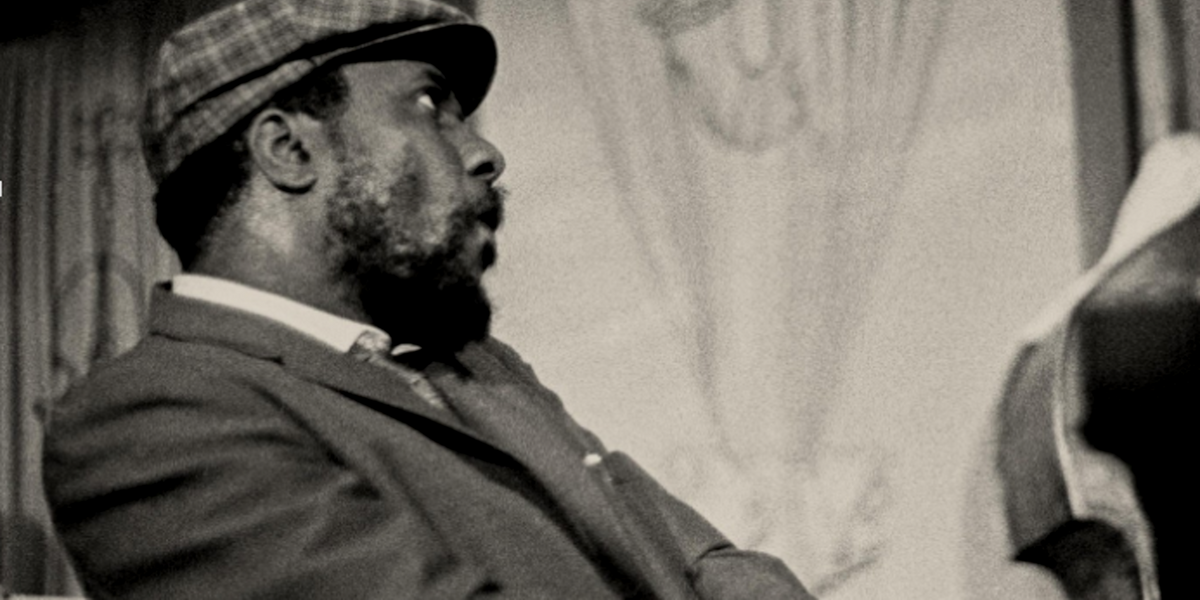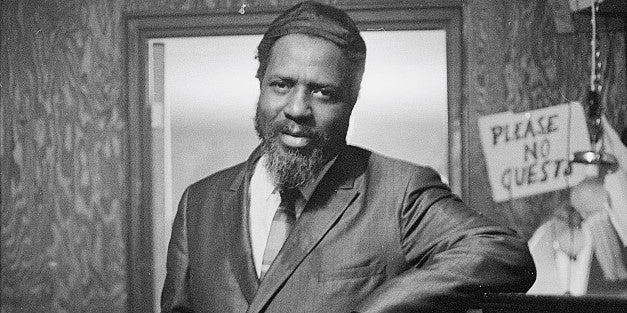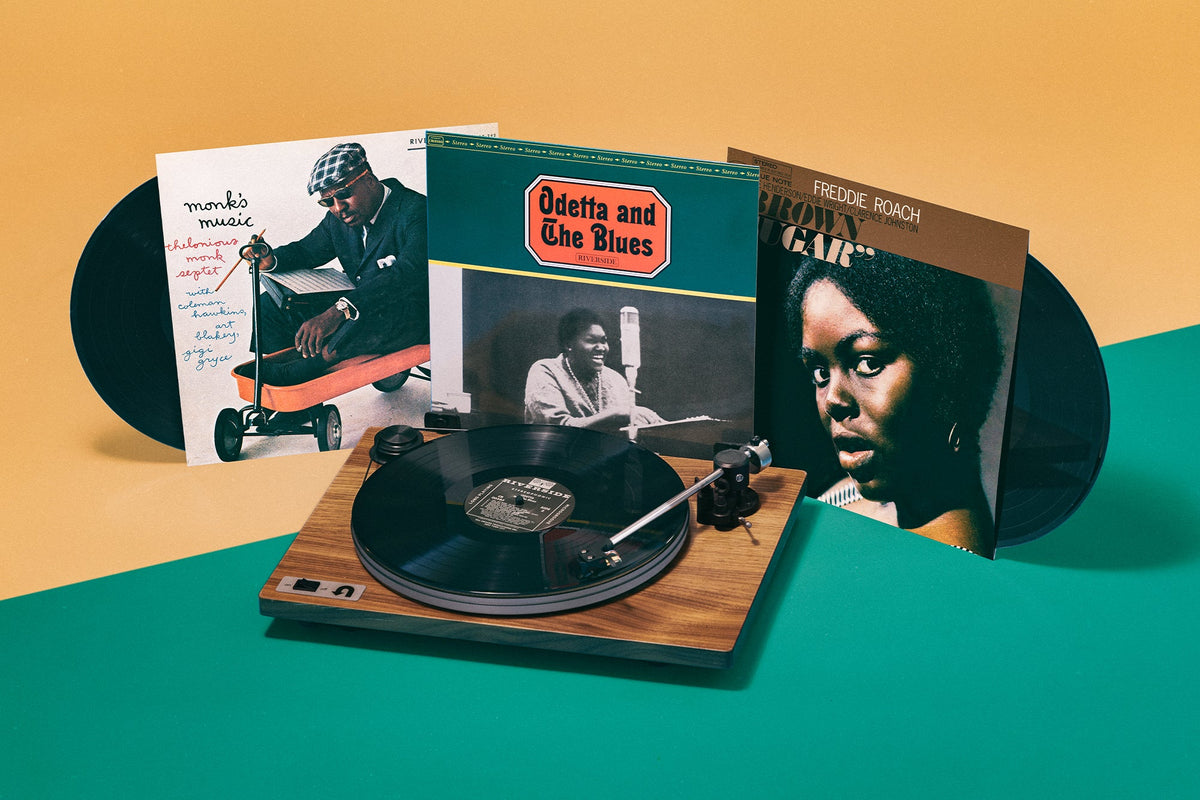‘Monk’s Music’: A Defining Moment in Jazz
On the landmark Thelonious Monk album that helped launch John Coltrane’s solo career
Time changes everything. Today’s fresh innovations are destined to become tomorrow’s stale clichés and what was once deemed revolutionary eventually seeps into the mainstream to form the bricks of the establishment. But this is a rather glib perception of how opinions change over the years, and doesn’t take into account the pain of rejection that many visionaries in the worlds of art and music face simply because they find themselves ahead of their time.
Take the much-fêted jazz pianist and composer Thelonious Monk, for example; today, he’s universally acknowledged as a jazz icon and his place in the pantheon of the genre’s giants — alongside Louis Armstrong, Duke Ellington, Charlie Parker and Miles Davis — is undisputed. But it wasn’t always like that. For a long time, Monk was the bête noire of jazz.
Born in Rocky Mount, North Carolina, and raised in New York, Thelonious Sphere Monk was a classically trained pianist who emerged as part of the bebop revolution alongside Charlie Parker and Dizzy Gillespie in the mid-1940s. In the early part of his career, he struggled to find an appreciative audience; his progressive innovations consisting of angular melodies, offbeat rhythms and startlingly dissonant harmonies were considered too “far out” even for some Parker and Gillespie fans, and his music faced hostility and ridicule not only from the public but also from club owners, music critics and even some fellow jazz musicians.
“He was told he plays piano wrong, he’s playing the wrong chords and the songs are juvenile and don’t make any sense,” said the pianist’s son T. S. Monk in a 2020 interview, highlighting the battle his father faced in being taken seriously. His unique sonic language made him a pariah of the Big Apple jazz scene, but then, one night in 1947, his luck changed when Alfred Lion, the co-founder of Blue Note Records, saw him play. “I loved him,” Lion was quoted as saying in Richard Havers’ Blue Note: Uncompromising Expression. “When I heard him, I keeled over and said, ‘That guy’s so different — and the compositions, the beat.’”
Lion, who had begun recording swing and boogie-woogie acts for his label when it started in 1939, began to gravitate to modern jazz in the late ’40s and had no hesitation in adding Monk — who by then had acquired the nickname, the “High Priest of Bebop” — to his label’s small roster. The pianist cut a series of musically groundbreaking 78 RPM discs for Blue Note between 1947 and 1952, which were an artistic triumph but, sadly, an unmitigated commercial disaster. Though they were instrumental in establishing Monk’s quirky, singular style and extended the language of modern jazz, they largely fell on deaf ears. “He can’t play. He has two left hands,” a record store owner (quoted in Leslie Gourse’s Straight, No Chaser: The Life and Genius of Thelonious Monk) purportedly complained to Lion’s wife, Lorraine, one of Monk’s biggest champions, who struggled to sell his records and get them airplay.
Although Monk’s records sold poorly, Blue Note succeeded in getting the pianist valuable attention, but ultimately had to let him go to guarantee the label’s financial survival. But all was not lost. In 1952, Monk’s career picked up momentum when he signed with Prestige, another Big Apple jazz indie label, and via a series of impressive 10” LPs for them began to make an impact on New York’s contemporary jazz scene. Two years later, his stock rose even further when he joined Riverside, a label set up in 1953 by the producers Bill Grauer and Orrin Keepnews, ostensibly to reissue antique blues and jazz recordings. With the acquisition of Monk, Riverside quickly blossomed into one of the main conduits of progressive modern jazz during the late 1950s.
Monk’s Music was the pianist’s fifth album for the label and came on the back of Brilliant Corners, released in April ’57, which brought Monk, then 39, many critical plaudits; seen as his breakthrough record, it confirmed him as a major force in contemporary jazz.
Eager to capitalize on the buzz surrounding Monk, Keepnews booked two days at Manhattan’s Reeves Sound Studios in June of ’57 and, keen to keep abreast of new technological developments in sound recording, taped the music in stereo, making it Riverside’s first jazz album utilizing an exciting new audio presentation that would soon become the norm.
For Monk’s Music, Monk elected to use a bigger sonic canvas than he’d used before by adding four horns to a rhythm section of piano, bass and drums. The session reunited the pianist with one of his mentors, Coleman Hawkins, who almost single-handedly brought the tenor saxophone to prominence as a solo instrument in jazz via his largely improvised 1939 recording “Body & Soul.” Monk and Hawkins had a working association that went back to 1944, when the pianist played in the saxophonist’s band and although the tenor player was 13 years the pianist’s senior, as Monk’s Music would reveal, the two had an undeniable musical affinity. In fact, their relationship was more like a mutual admiration society. “Nobody can pick up a tenor sax without playing some of him,” Monk gushed about Hawkins to DownBeat magazine in 1956, while the saxophonist heard much to admire in Monk’s work, especially his originality. “He fell in love with Monk,” the bebop tenor saxophonist Budd Johnson told journalist Ira Gitler (included in his book, Swing to Bop: An Oral History of the Transition in Jazz in The 1940s). “When he heard [Monk’s] piano playin’ that stuff with the changes, he said, ‘This is where it is … I want that man for a piano player.’”
Monk also brought another old friend to the session, drummer Art Blakey, a polyrhythmic powerhouse from Pittsburgh who could light a fire under a soloist with his propulsive swing syncopations and had first recorded with Monk on the pianist’s Blue Note sessions. The two had been in the studio together just a month before the Monk’s Music session, when the pianist guested on the Atlantic Records’ LP Art Blakey’s Jazz Messengers with Thelonious Monk.
As that record showed, Monk’s unique rhythmic conception, which could challenge some drummers, didn’t faze Blakey, who seemed to possess an intuitive understanding of the unique sonic architecture of the pianist’s compositions. “Blakey was the best drummer for Thelonious by far,” Monk’s manager, Harry Colomby said in 2001 (quoted in Gourse’s Art Blakey: Jazz Messenger). “Thelonious loved Billy Higgins, but Blakey was the best.” Colomby’s comments were echoed by the jazz pianist Billy Taylor, who said when Monk played with Blakey, the pianist “knew the pulse would be steady” and “would really shift gears,” which enabled him to “do more daring, off-rhythmic things.”
Also on the Monk’s Music session was a rising tenor saxophone star: 30-year-old John Coltrane, who rose to fame in 1955 playing in the Miles Davis Quintet but whose unreliability due to heroin addiction saw him fired by the trumpeter in April 1957. His sacking was a wake-up call for Coltrane, who went home to Philadelphia and quit drugs the hard way: by doing it “cold turkey.” Monk, who had taken a liking to Coltrane, then took the young tenorist under his wing by inviting him to join his band a few weeks before the Monk’s Music session.
The third saxophonist on Monk’s Music is the altoist George “Gigi” Gryce, who also arranged the album’s five tracks; originally from Florida, Gryce had cut his teeth with jazz vibraphonist Lionel Hampton and was an in-demand sideman and arranger in the ’50s, working with everyone from Max Roach to Dizzy Gillespie.
Joining him in the brass section was trumpeter Ray Copeland, who had appeared on a couple of Monk’s Prestige albums and had also featured as a sideman on records by Lionel Hampton and pop singer Frankie Laine.
Completing Monk’s septet was the double bassist Wilbur Ware, a self-taught musician from Chicago, who’d previously played on albums by Johnny Griffin, Lee Morgan and Zoot Sims; his only previous recording with Monk had been in April 1957 on the tune “Monk’s Mood,” the closing track on the earlier Thelonious Himself album.
Curiously, Monk was absent from Monk’s Music’s opening track: a 52-second rendering of the 19th century British hymn, “Abide With Me,” written by Henry Francis Lyte and set to the melody of “Eventide” by William Henry Monk (no relation). In his original liner notes, Monk’s producer Orrin Keepnews described the tune, which Gryce beautifully arranged for four horns, as “always a favorite of Thelonious’” while Robin D. G. Kelley stated in his acclaimed Monk biography, Thelonious Monk: The Life and Times of an American Original, that the pianist became familiar with it as a child and adored its plaintive melody.
The next track, “Well, You Needn’t,” which marks the first appearance of Monk’s septet, is a revamp of an older original tune that the composer had copyrighted in 1944 and first recorded in 1947 for Blue Note. Blakey played the drums on that version but the Monk’s Music iteration, extended to an epic 11 minutes, is significantly different. Beginning with a brief piano intro, the horns state the tune’s knotty melody before Monk delivers the first solo, which is characterized by a succession of spiky dissonances, pregnant pauses and flowing cascades of notes.
Then we hear Monk shout “Coltrane! Coltrane!” to alert the saxophonist that it’s time for his solo; Trane obliges by blowing some carefully considered but flowing lines that navigate Monk’s tricky changes with aplomb. “I always had to be alert with Monk,” the saxophonist told an interviewer in 1960, “because if you didn’t keep aware all the time of what was going on, you’d suddenly feel as if you’d stepped into an empty elevator shaft.”
The rest of the band take their turn to solo; Ware isn’t too adventurous, preferring to walk his bass while Blakey punctuates the bassist’s notes with ricocheting rimshots. The drummer then breaks into a thunderous solo that eventually ushers in Hawkins, who supplies lithe melodic twists and turns, and then Gryce, who blows some pretty lines before Monk returns to lead the tune home.
“Ruby, My Dear,” which closes side one on a mellow high, is one of Monk’s most famous ballads and was named after a former girlfriend, Rubie Richardson. Here, Monk whittles the group down to a quartet; Coltrane, Gryce and Copeland all drop out, leaving Hawkins as the lone horn. The simpatico between the tenorist and Monk is extraordinary; Hawkins weaves flowing melodic patterns over Monk’s spare chordal framework and caresses the song’s haunting melody with a rhapsodic tenderness. Monk’s solo is shorter, defined by shimmering tone clusters, before Hawkins picks up the baton again.
Side two leads with “Off Minor,” a Monk tune that was first recorded by another pianist (Bud Powell) before its composer waxed a trio version for Blue Note in 1947. Characterized by a short motif of descending notes, the tune shows how Monk could create a melodic kernel that, although oddly angular, could be instantly hummable. Hawkins and Copeland take the only horn solos, with both musicians showing their deep understanding of Monk’s intricate harmonic language.
Defined by an infectious riff, the hard-swinging “Epistrophy” is another older number from Monk’s canon. Co-written with the noted bebop drummer Kenny Clarke in the 1940s, in its earliest incarnations the tune was known as “Fly Right,” “Fly Rite,” “Iambic Pentameter” and “The Theme.” Monk first played it with the house-band at Minton’s Playhouse, a famous nightspot in Harlem, before recording it for Blue Note in 1948. The longer septet version on Monk’s Music allows all the musicians an opportunity to solo, with Coltrane — whose vibrato-less tone evinces a more modern conception than Hawkins’ — taking the first.
The recording sessions for Monk’s Music yielded one more track; a new composition called “Crepuscule With Nellie,” a slow, oddly beautiful ballad dedicated to the pianist’s wife, which was written when she was seriously ill in the hospital. A notoriously tricky piece to play, Monk and his sidemen labored long and hard to get it right but a malfunctioning stereo tape machine meant that the track was recorded in mono only, and because Riverside wanted to promote Monk’s Music as the label’s first truly stereo jazz LP, they dropped the tune, which is why it’s omitted from VMP’s reissue. (“Crepuscule With Nellie” was restored to the running order of later editions of Monk’s Music).
Monk’s Music came out with an eye-grabbing cover photograph: It features a dapper-looking Monk, complete with cool shades and a flat cap, perched on a child’s small red cart. Initially, Riverside’s art director wanted Monk to don a monk’s habit and stand in a pulpit holding a glass of whiskey, but the pianist demurred. “I told them no … Monks don’t even stand in pulpits,” the pianist recalled (in a 1958 interview with Frank London Brown in DownBeat), adding: “Then they wanted to dress me in evening clothes, white tie and all. I told them I would pose in a wagon, because I have actually composed while sitting in my kid’s wagon on the front sidewalk.”
Monk’s Music marked a defining moment in jazz; not just for its enigmatic architect, Thelonious Monk, whose genius was now beginning to be recognized, but also for John Coltrane. He was, at this point, still the sorcerer’s apprentice but his six-month-long artistic association with the older musician would instill him with the confidence to launch his own career as a leader. He gleaned much from Monk, as he was at pains to acknowledge when his solo career got underway. “Working with Monk brought me close to a musical architect of the highest order,” he told DownBeat in 1961. “I felt I learned from him in every way — through the senses, theoretically, technically. I would talk to Monk about musical problems, and he would sit at the piano and show me the answers just by playing them.”
While Monk’s Music, which was admitted to the Grammy Hall Of Fame in 2001, was the platform for Coltrane’s solo career to fully take flight — he recorded his first long-playing masterpiece Blue Train three months later — the record also put Monk on the road to mainstream approval; in 1962, he signed with a well-heeled major label for the first time (Columbia Records), which helped broaden his audience and, two years after that, he featured on the front cover of Time magazine.
After his death in 1982, more recognition followed: A street was named after him in New York and he received a star on the Hollywood Walk Of Fame; he also appeared on a U.S. postage stamp and was posthumously awarded the Pulitzer Prize. But perhaps the greatest indication of how Monk and his music has been embraced by the world is the fact that many of his tunes — including the immortal “Round Midnight” as well as “Well, You Needn’t,” “Ruby, My Dear” and “Epistrophy” from Monk’s Music — have become jazz standards. And, according to the pianist’s son, T. S. Monk, his influence can be felt in today’s music. “So many of his harmonic innovations have filtered down to popular and R&B music and are commonplace now,” he said in a 2020 interview. “I do music clinics with high school students and I tell them that there would be no funk without Monk.”
It took a while, but, finally, it seems the world has caught up with Thelonious Monk — and his transformation, from a misunderstood agent provocateur of the avant-garde to a universally celebrated musical genius, shows that justice has been served. Time really does change everything.
Charles Waring is a regular contributor to MOJO, Record Collector and uDiscover Music. He has written liner notes to over 400 albums and co-authored funk singer Marva Whitney’s memoir, God,The Devil & James Brown.
Related Articles
Join the Club!
Join Now, Starting at $36Pages







